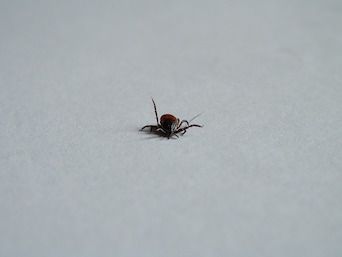The Microbiomes of North American Ticks
A recent review paper provided insight on the microbiomes of North American ticks important to veterinary medicine.

Ticks hold important significance as disease vectors in veterinary medicine. “Ticks were the first arthropod to be associated with transmission of a disease agent,” wrote the authors of a Frontiers in Veterinary Science review paper on tick microbiomes. This association was first discovered in the late 1800s when Rhipicephalus (Boophilus) ticks were identified as transmitters of Babesia bigemina, which causes Texas cattle fever.
Ticks’ role as vectors of pathogenic microorganisms has been researched extensively. In recent years, there has been increased research interest in the tick microbiome. Studying this microbiome, the authors noted, can provide insight on how ticks maintain and transmit pathogens and provide clues for developing novel tick and pathogen control strategies.
Tick Microbiomes in North America
Next-generation sequencing has enabled improved detection of tick microbial communities. These communities consist largely of symbiotic microorganisms that are either obligate or facultative and, quite likely, nonpathogenic. It is possible, the authors wrote, that the pathogenic microorganisms have little impact on the rest of the microbiome.
A previous study determined that the phylum Proteobacteria predominates in North American tick microbiomes. In the current review paper, the authors highlighted the microbiomes of several ticks of veterinary importance in North America.
- Amblyomma americanum (Lone Star tick): The A. americanum microbiome includes nonpathogenic Coxiella-LE and Rhipicephalus spp. Previous studies have reported microbiome differences according to sex and geographic location. For example, one study found a greater abundance of Coxiella-LE in female than in male A. americanum. Interestingly, microbiome diversity of A. americanum reportedly increases during tick feeding. Study of this tick’s microbiome demonstrated that short-term environmental changes have little impact on microbiome composition.
- Ixodes scapularis (deer tick): “I. scapularis has public and veterinary health importance” as a disease vector, the authors wrote. As with A. americanum, the I. scapularis microbiome composition varies according to geography, with Enterobacteriaceae dominating in North Carolina and Rickettsiaceae dominating elsewhere. In addition, several studies have reported greater microbiome diversity in male than in female I. scapularis.
- Dermacentor andersoni (Rocky Mountain wood tick) and D. variabilis (American dog tick): The microbiome of Dermacentor ticks commonly contains Francisella-LE, Arsenophonus, and Rickettsia. The Acinetobacter genus, which contains pathogenic and multidrug resistant species, has been detected in ticks feeding on tetracycline-treated calves.
- Rhipicephalus sanguineus (brown dog tick): Coxiella-LE predominates in the R. sanguineus microbiome, which also contains Rickettsia, Borrelia, and Wolbachia.
Factors Affecting Tick Microbiome Composition
Many factors can alter a tick’s microbiome. For example, deforestation and warmer winters can increase a tick’s geographic distribution and exposure to different microbial communities. In addition, tick feeding and co-feeding can lead, respectively, to the acquisition and exchange of microorganisms. Also, pathogens themselves can alter the tick microbiome.
Importantly, imbibing blood can affect a tick’s microbiome composition. The blood meal can contain antimicrobial compounds like ubiquitin. Also, imbibing blood can alter a tick’s gut osmolarity, which could affect a microorganism’s motility, morphology, and expression of virulence factors in the gut.
Looking Forward
In the future, analytic methods like proteomics and metabolomics could help “uncover some of the answers to the interaction between the tick host and its microbiome, and in turn how these interactions impact the presence of pathogens,” the authors concluded.
Dr. Pendergrass received her Doctor of Veterinary Medicine degree from the Virginia-Maryland College of Veterinary Medicine. Following veterinary school, she completed a postdoctoral fellowship at Emory University’s Yerkes National Primate Research Center. Dr. Pendergrass is the founder and owner of JPen Communications, a medical communications company.